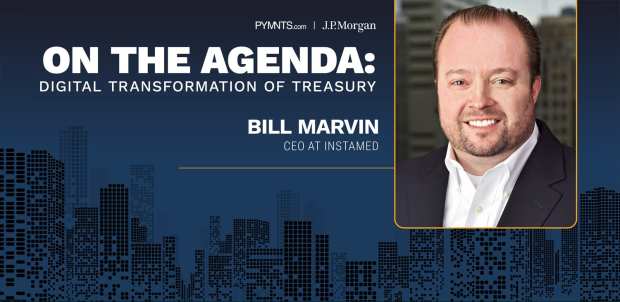InstaMed CEO: From Telemedicine To ePayments, Healthcare Embraces A Digitization Boom

As it’s done in many industries, the global pandemic has added immense haste to the healthcare sector’s digitization roadmaps. Yet the industry’s trajectory since the pandemic hit has looked immensely different than any other.
While other organizations struggled with shutdowns and work-from-home mandates, healthcare providers stepped up to save lives on the front lines. Yet providers not treating COVID-19 patients, for example, those performing elective surgeries, were indeed forced to shutter or halt operations, creating a painful cash flow disruption.
It’s not possible for all areas of healthcare services to migrate online, of course, but for those that could, accelerating the digital migration took on far greater importance than ever before.
As Bill Marvin, CEO at J.P. Morgan-owned InstaMed, told Karen Webster, the industry’s embrace of telemedicine technologies has also opened the door for the sector to enhance the online payments experience for patients, too. Yet while adoption of these solutions has certainly escalated, the complexities of the healthcare arena mean inertia from the pandemic to digitize will continue well into the future.
Pushing The Rope
Telemedicine, digital statements and online payment acceptance aren’t new concepts for the medical industry. Yet it’s the unique complexities of the market that have historically held it back from making significant progress on the digitization front.
“Healthcare is always going to be a little different because of the extra regulatory responsibilities that parties have,” explained Marvin, adding that, unlike other industries, transactions in the medical arena involve more than just the consumer and service provider. They often involve the patient, that patient’s employer and the provider. “Complexity is higher, and there continues to be a need for more clarity, more information, and more digital tools in order to make that whole cycle work better and faster.”
Marvin described the healthcare sector’s struggle to embrace digital payments like “pushing a rope.”
Pre-pandemic, he explained, while sophisticated and patient-friendly healthcare and payment services existed, adoption remained slow.
“When you push a rope, you go nowhere,” he said of the struggle the FinTech space has faced to drive adoption of these tools. “But when you pull a rope, you go somewhere.”
The COVID-19 crisis was the catalyst that changed the narrative from pushing to pulling the rope, he added.
The Digitization Drive
Pre-pandemic, among the biggest barriers to migrating to digital payments, telemedicine and other electronic tools was a lack of time and resources. Now, many healthcare providers have been suddenly forced to figure out how to continue to provide care in a remote setting or support contactless interactions with patients — including payments.
Suddenly, explained Marvin, industry players have the bandwidth to adopt these technologies — and fast. Yet the immediacy of the need means providers are seeking the basics of these digital solutions first.
“They’re not taking the time to slow the implementation down to customize and configure,” he said, adding that these providers needed out-of-the-box solutions to ensure business continuity as quickly as possible.
One of the biggest focuses of the sector has been to not only implement telehealth solutions, but to imbed the patient payment experience directly into that digital platform — a feature Marvin said has traditionally been an afterthought. Today, it’s vital to preserving cash flow and keep patients safe.
Looking ahead, as provider offices begin to reopen, healthcare firms will increasingly embrace more sophisticated and customized solutions to build upon the digitization progress they’ve made thus far. Considering just how profound the impact of the pandemic has been on the healthcare space, Marvin said it is unlikely the industry will ever return to a pre-pandemic “normalcy.” Instead, patients will continue to seek out remote services and, when required to meet in person, will seek a touchless experience in payments and beyond.
Building trust with patients will be essential for the preservation of many practices, and adopting the right technologies to support a touchless, seamless, digital patient experience will be key.
Yet even with the progress made, there is still significant work to be done. According to InstaMed’s own research, while 80 percent of patients want to receive statements electronically, only about 10 percent of providers are able to fulfill that need. As industry players navigate regulatory challenges and the complexities of a multiparty payment and service flow, it’s essential to keep the momentum going even after the pandemic wanes.
“What we’ll see when we look back at this era is a step-change in the adoption curve,” said Marvin. “With the three-party system and regulatory pressures on different parties, it’s going to continue to be a block-and-tackle, chip-away-at-it, one-digital-transaction-at-a-time kind of adoption curve. But what we have seen this year is a big step-change moving us forward.”
